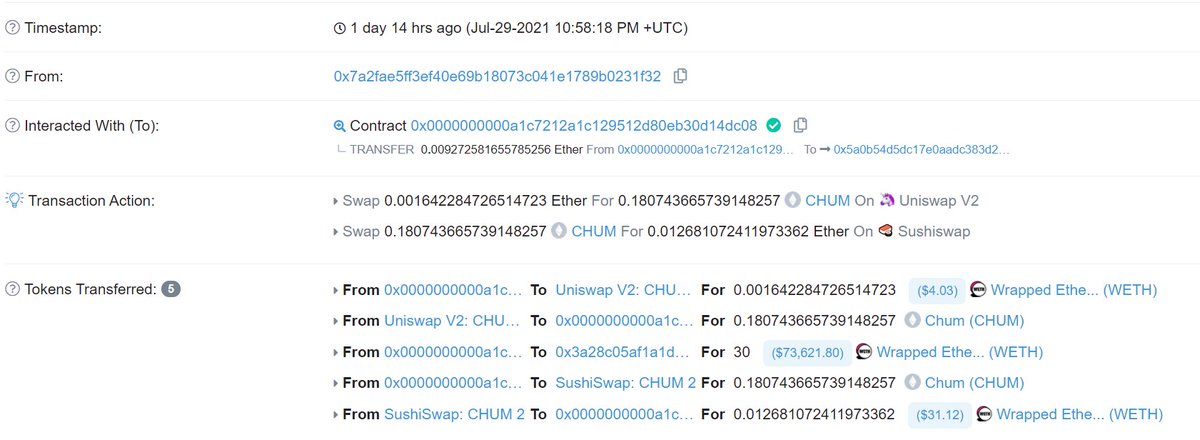
Dropping what is probably the most alpha packed thing I've written so far: an in-depth writeup of my strategy for a highly competitive MEV opportunity, the Synthetix Ether Collateral Liquidations, along with code
Blog post:
bertcmiller.com/2021/09/05/mev…
Repo:
github.com/bertmiller/sMEV
Blog post:
bertcmiller.com/2021/09/05/mev…
Repo:
github.com/bertmiller/sMEV
Blog post contains:
- My process from start the finish
- Explanation of why I made the design decisions I did
- How I sped up data collection
- A few gas optimizations
- Explanation of my economic strategy
- My novel bundle submission strategy
- Code snippets
- Many links
- My process from start the finish
- Explanation of why I made the design decisions I did
- How I sped up data collection
- A few gas optimizations
- Explanation of my economic strategy
- My novel bundle submission strategy
- Code snippets
- Many links
Repo contains:
- The only (I think?) open source example of how to backrun transactions
- Monitoring tools I made
- Contracts used for execution, including dydx flashloan
- Contract for data collection
- my somewhat embarrassing messy Hardhat testing env
- The only (I think?) open source example of how to backrun transactions
- Monitoring tools I made
- Contracts used for execution, including dydx flashloan
- Contract for data collection
- my somewhat embarrassing messy Hardhat testing env
This was a fun challenge because it was extremely well known opportunity (h/t: @KalebKeny for that!) where everyone had ample time to prepare. So it was bound to be really competitive. I also got to use cool knowledge I had previously tweeted about around the Flashbots auction.
In the end there was a streak of unlucky blocks and a mempool bot got the MEV 🤷🏻♂️
Anyway, I hope this helps get more people into searching
gl, hf everyone
gl, hf everyone
Is the blog post enough or should I twitch stream this one too?
• • •
Missing some Tweet in this thread? You can try to
force a refresh









